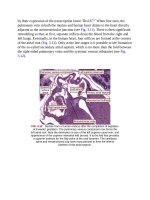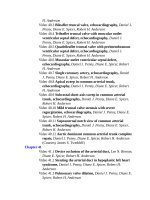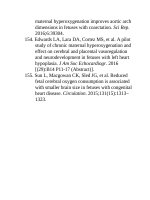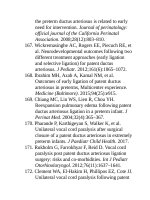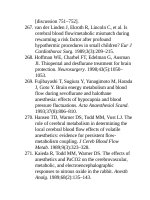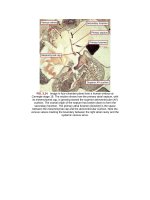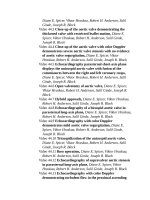Andersons pediatric cardiology 1121
Bạn đang xem bản rút gọn của tài liệu. Xem và tải ngay bản đầy đủ của tài liệu tại đây (107.98 KB, 3 trang )
HistoricalPerspective
Theswingtoaninterventionalapproachinthetreatmentofpulmonaryvalvar
stenosisresultedfromapartnershipbetweencardiologistsandradiologists.The
firstcaseofcatheterinterventionforpulmonaryvalvarstenosiswasreportedin
1953.55Auretericcathetermodifiedwithawirewasintroducedthroughthe
pulmonaryvalve,thewirebeingtensionedtoformabow-shapeddeviceusedto
incisethestenosedvalve.55Later,thesametechniquewasusedforthestenosed
tricuspidvalve.56Theuseofastandardangiographicballoontodisruptthe
pulmonaryvalvewasdescribedin1979.57Thetechniqueinvolvedarapid
pullback,inseptostomyfashion,oftheballooncatheterfromthepulmonary
trunktotherightventricularoutflowtract.Meanwhile,gradeddilationwas
beingdevelopedforatheroscleroticvessels,58includingimportanttechnical
developmentsinguidewiresandcatheters.59,60Furtherrefinementsallowedthe
techniquestobeappliedtosmallervessels,includingthecoronaryarteries,61–64
usingadouble-lumenballooncatheterdesignedtobeusedoveraguidewire.Itis
notcommonlyknownthatthefirstsuccessfulstaticballoondilationofthe
pulmonaryvalve,aswenowknowthetechnique,wasperformedinanEnglish
bulldogin1980,65priortothefirstreportofthesuccessfulprocedurein1982in
achild.66Sinceitwasfirstperformed,thetechniquehasrapidlybecomethe
treatmentofchoiceforpulmonaryvalvarstenosis.Apartfromimprovementsin
thedesignofballoonangioplastycathetersandguidewirestoimprovetheprofile
andtrackingabilityoftheproducts,theproceduraltechniquehasnotchanged
significantlysinceitsinception.Onlyoneotherinterventionaltechniquewas
reportedtotreatpulmonarystenosis.Thisinvolvedanendovasculardevicewith
anextendabledoublebladedesignedtobeextendedinthepulmonarytrunkand
drawnbackthroughthepulmonaryvalvetodisruptthestenosedleaflets.67After
thefirstreportofthreechildrentreatedinShanghai,nofurtherreporthasbeen
publishedintheliterature.Morerecently,transcatheterpulmonaryvalve
implantationhasbeenadvocatedforselectedpatientswithrefractoryvalvar
pulmonarystenosis.68
Indications
Indicationsforinterventioninchildrenarewidelydiscussedintheliterature,
withequallywidevariabilityinthecriteriaforselection.Theindicationsfor
catheterinterventionshouldbesimilartotheindicationsforasurgicalapproach,
and―becauseofthelessinvasive,expensive,andtime-consumingadvantagesof
catheterintervention―thistechniqueremainsthefirstchoiceinallcenters.
Historically,mostgroupswouldinterveneiftheechocardiographicallyderived
peakinstantaneousgradientacrossthepulmonaryvalvewereinexcessof64
mmHg,correlatingwithaDopplervelocityofmorethan4ms–1,whereasother
groupshaverecommendedathresholdofapeakinstantaneouspressuregradient
ofgreaterthan50mmHg69whencardiacoutputisnormal.Inpatientsinacute
orchronicheartfailure,thecapacityoftheventricletogeneratehigherpressures
isimpaired,cardiacoutputisreduced,andalowerthresholdforintervention
mustbeapplied.
ThemostrecentAmericanHeartAssociationrecommendations(Box42.2)list
criticalvalvarpulmonarystenosispresentatbirth,valvarpulmonicstenosiswith
apeakinstantaneousgradientgreaterthan40mmHg,aswellasclinically
significantvalvarobstructioninthepresenceofrightventriculardysfunctionas
classIindicationsfortranscatheterballoonpulmonaryvalvuloplasty.70
Box42.2
RecommendationsforPulmonary
Valvuloplasty
ClassI
Pulmonaryvalvuloplastyisindicatedforapatientwithcriticalvalvar
pulmonarystenosis(definedaspulmonarystenosispresentatbirthwith
cyanosisandevidenceofpatentductusarteriosusdependency),valvarpulmonic
stenosis,andapeak-to-peakcathetergradientorechocardiographicpeak
instantaneousgradientof>40mmHgorclinicallysignificantpulmonaryvalvar
obstructioninthepresenceofrightventricular(RV)dysfunction(Levelof
Evidence:A).
ClassIIA
1.Itisreasonabletoperformpulmonaryvalvuloplastyonapatientwith
valvarpulmonicstenosiswhomeetsthepreviouslydescribedcriteriain
thesettingofadysplasticpulmonaryvalve(LevelofEvidence:C).
2.Itisreasonabletoperformpulmonaryvalvuloplastyinnewbornswith
pulmonaryvalveatresiaandanintactventricularseptumwhohavea
favorableanatomythatexcludesRV-dependentcoronarycirculation
(LevelofEvidence:C).
ClassIIB
Pulmonaryvalvuloplastymaybeconsideredasapalliativeprocedureina
patientwithcomplexcyanoticcoronaryheartdisease,includingsomerarecases
oftetralogyofFallot(LevelofEvidence:C).
ClassIII
Pulmonaryvalvuloplastyshouldnotbeperformedinpatientswithpulmonary
atresiaandRV-dependentcoronarycirculation(LevelofEvidence:B).
FromFeltesTF,BachaE,BeekmanRH3rd.etal.Indicationsforcardiac
catheterizationandinterventioninpediatriccardiacdisease:ascientific
statementfromtheAmericanHeartAssociation.Circulation.
2011;123(22):2607–2652.
Althoughsomeattentionhasbeenpaidtointerventioninmildercases,the
evidenceforprogressionofmildstenosisislacking41andfollow-upcaneasily
determinethecasesthatdoprogress,withtheoptiontoplananinterventionstill
availableevenuptoadultlife.71–75Inadultswithmoderatetoseverestenosis,
signssuchaspersistentexerciseintolerance,pressureoverload,andtheriskof
rightventricularfibrosisaregoodindicationsforintervention69,74despitethe
usuallackofsymptoms.
Infantspresentingintheneonatalperiodwithmoderateorseverestenosis,
especiallythosepresentingwithaduct-dependentpulmonarycirculation,should
betreatedurgently.76–79
StandardTechnique
Thestandardsetupfortranscatheterballoonpulmonaryvalvuloplastyisnot
dissimilartothatemployedformostcardiaccatheterizationprocedures
performedinpatientswithcongenitalheartdisease(seeChapters17and18).
Fig.42.29depictsthestandardproceduralstagesofballoonpulmonary
